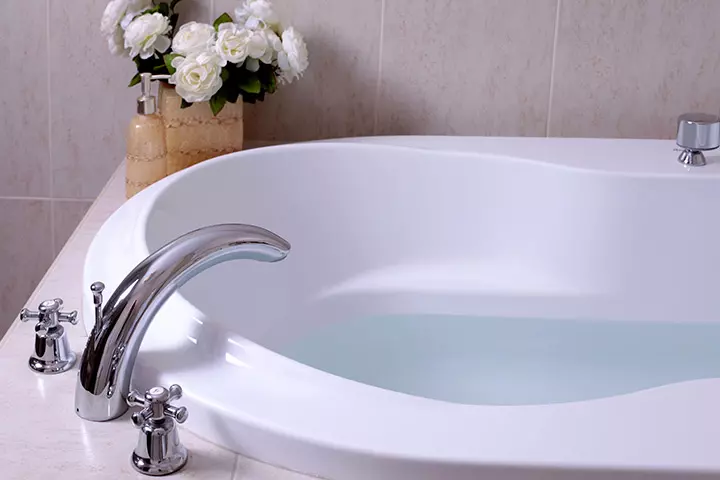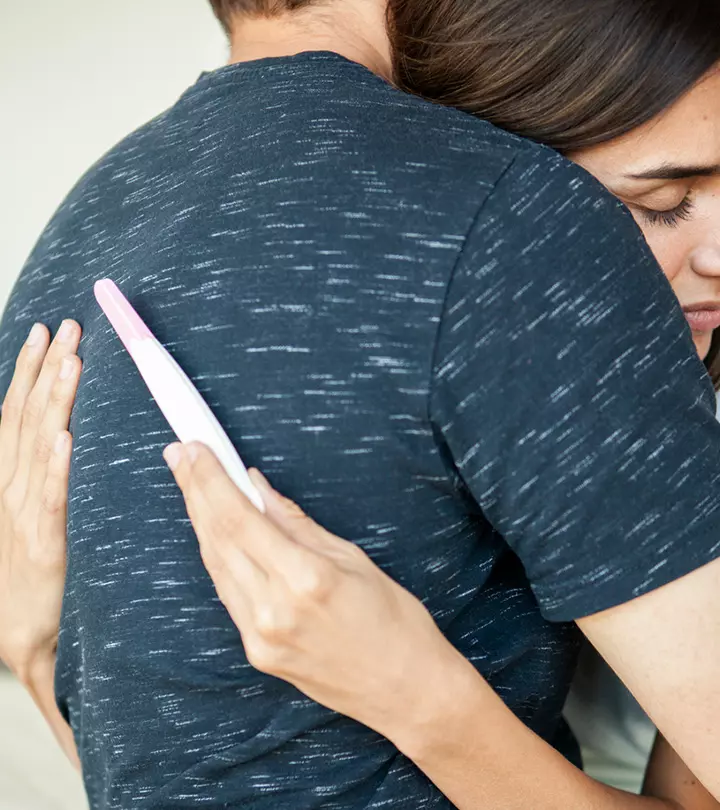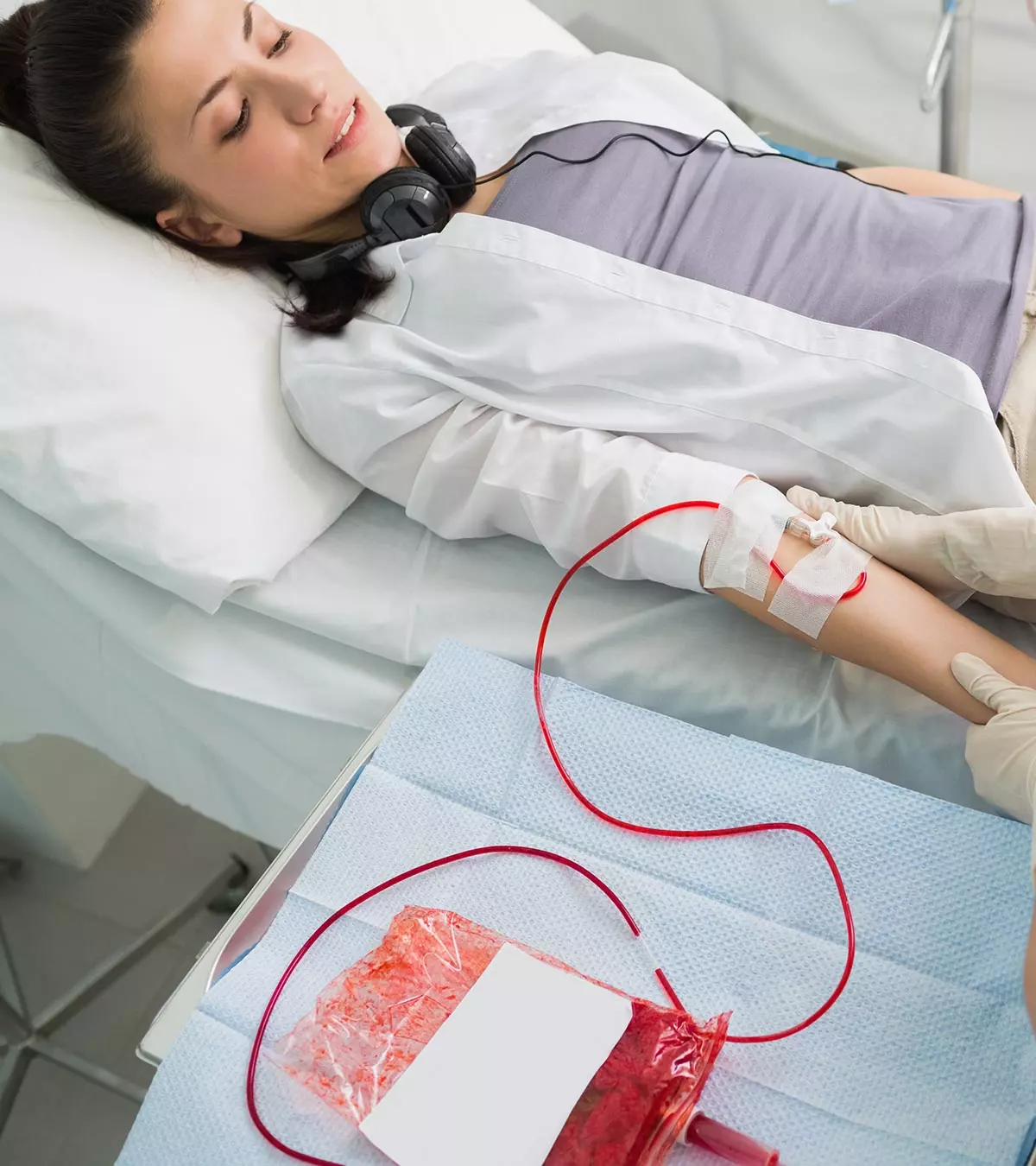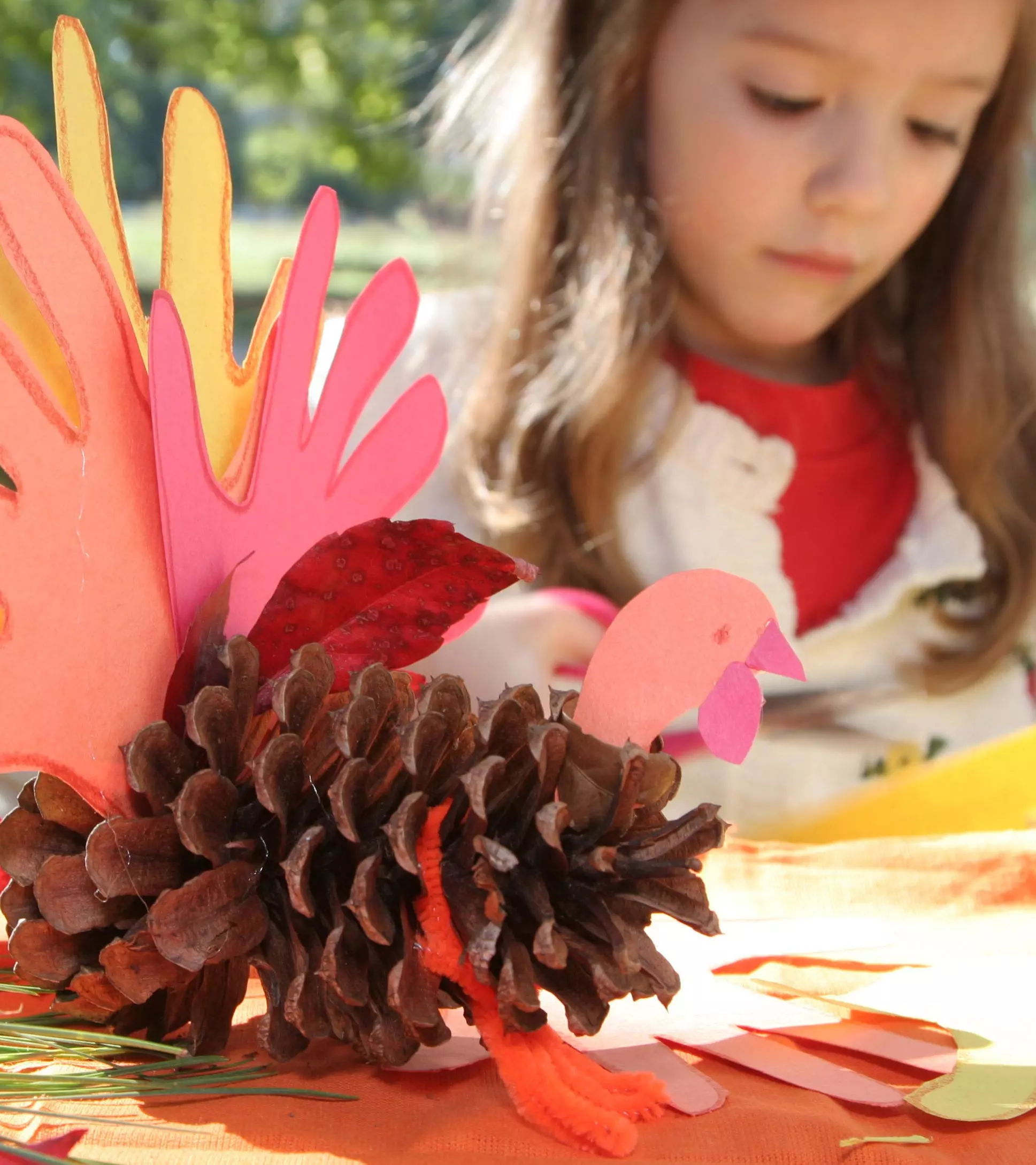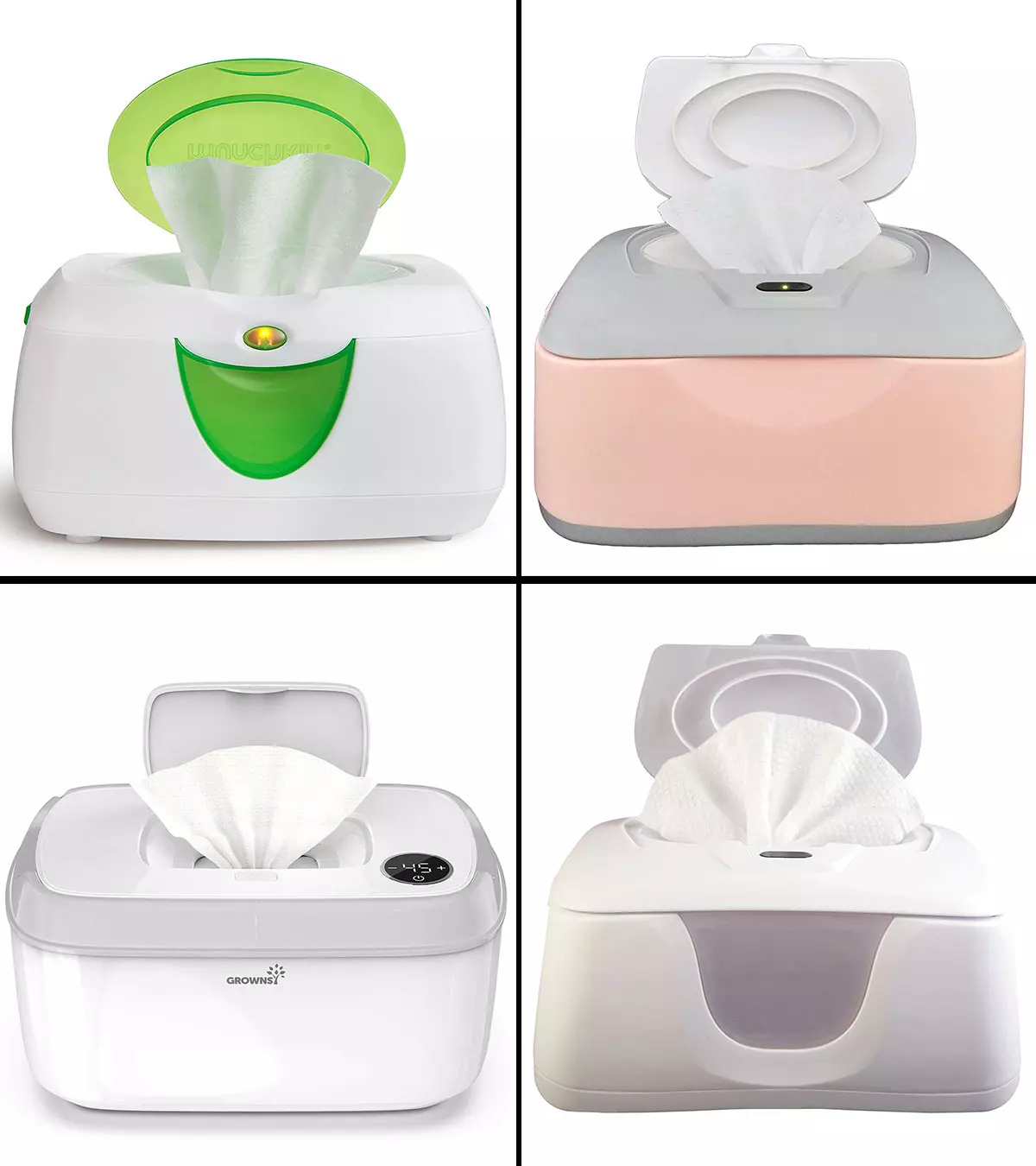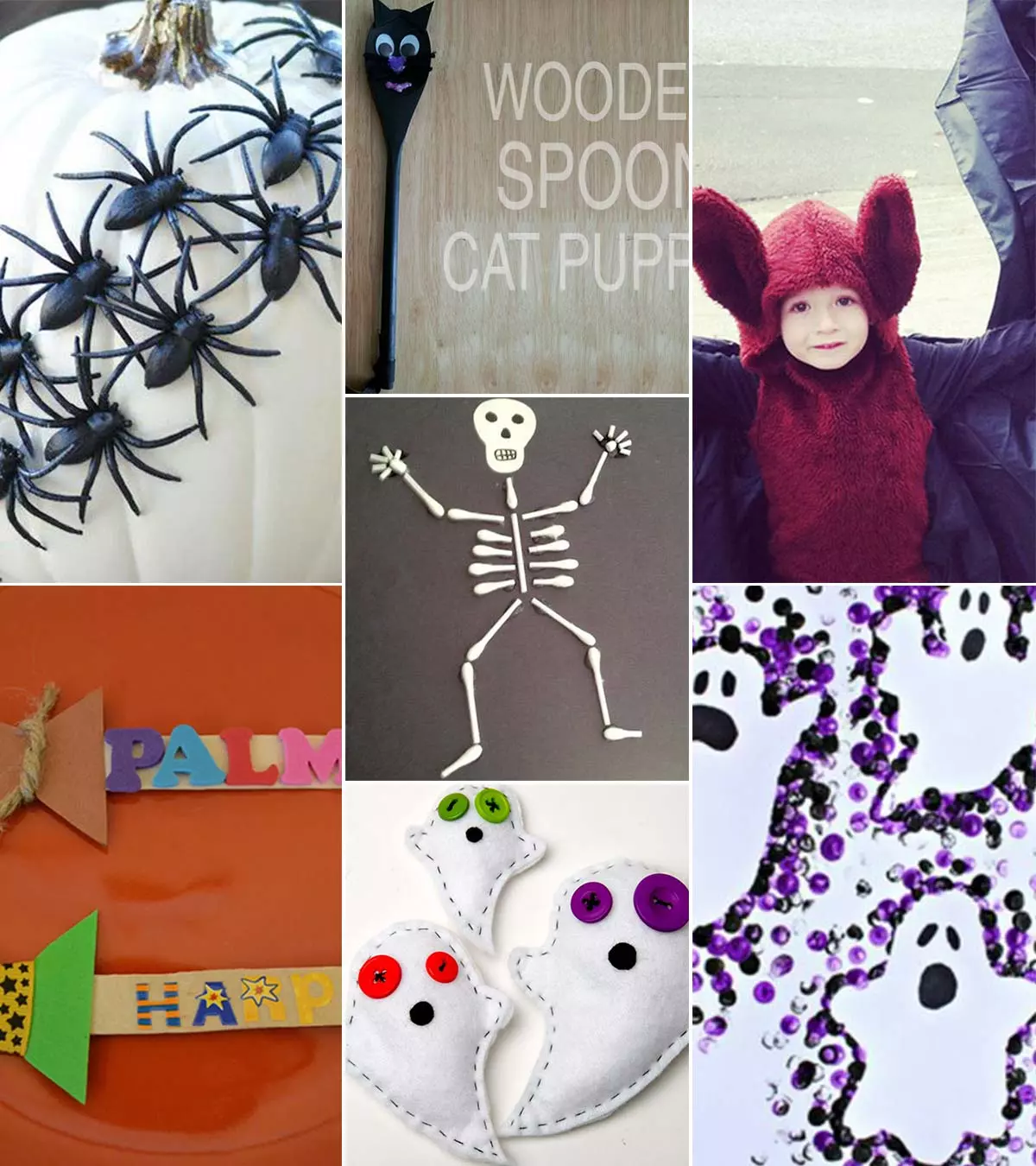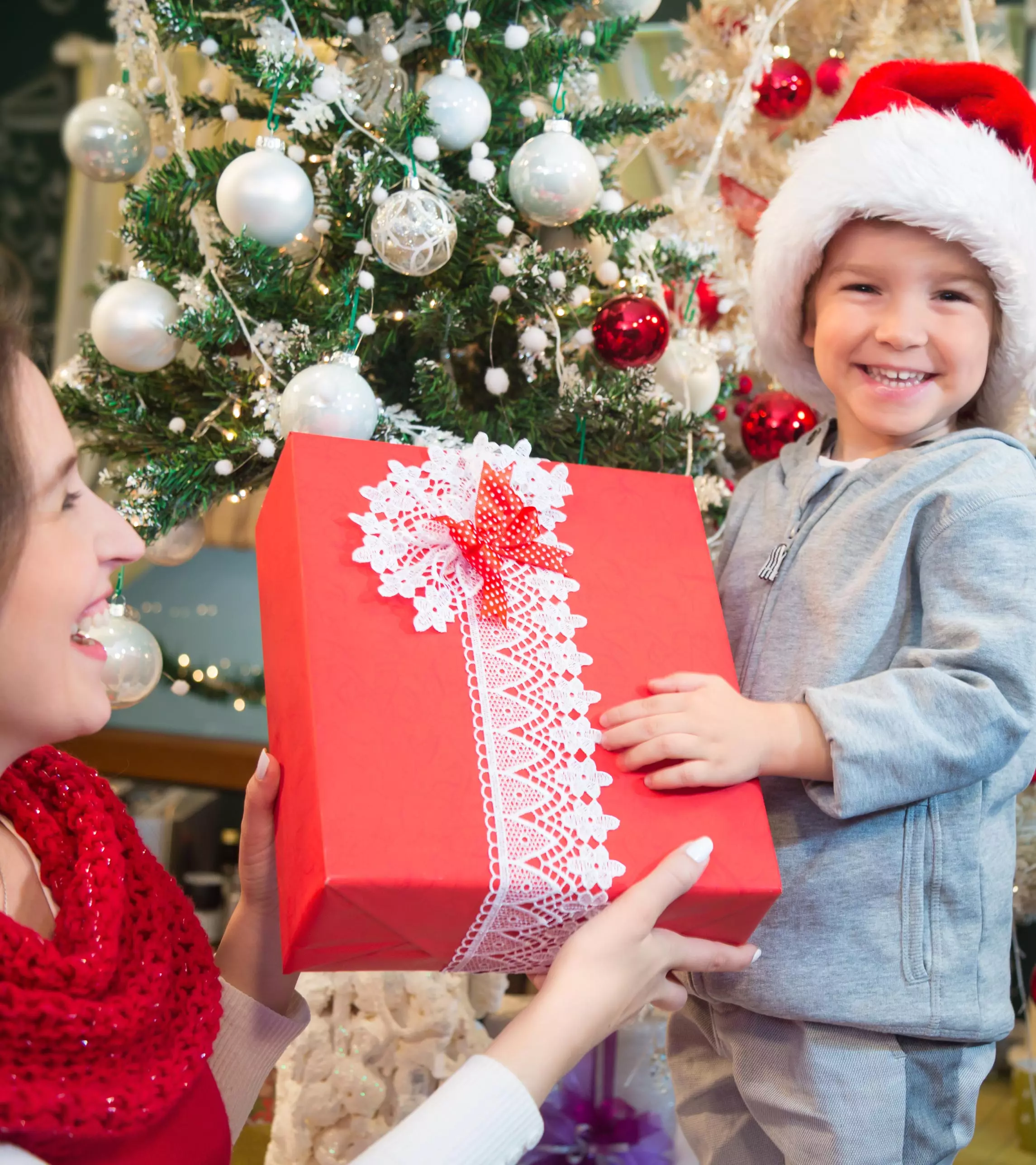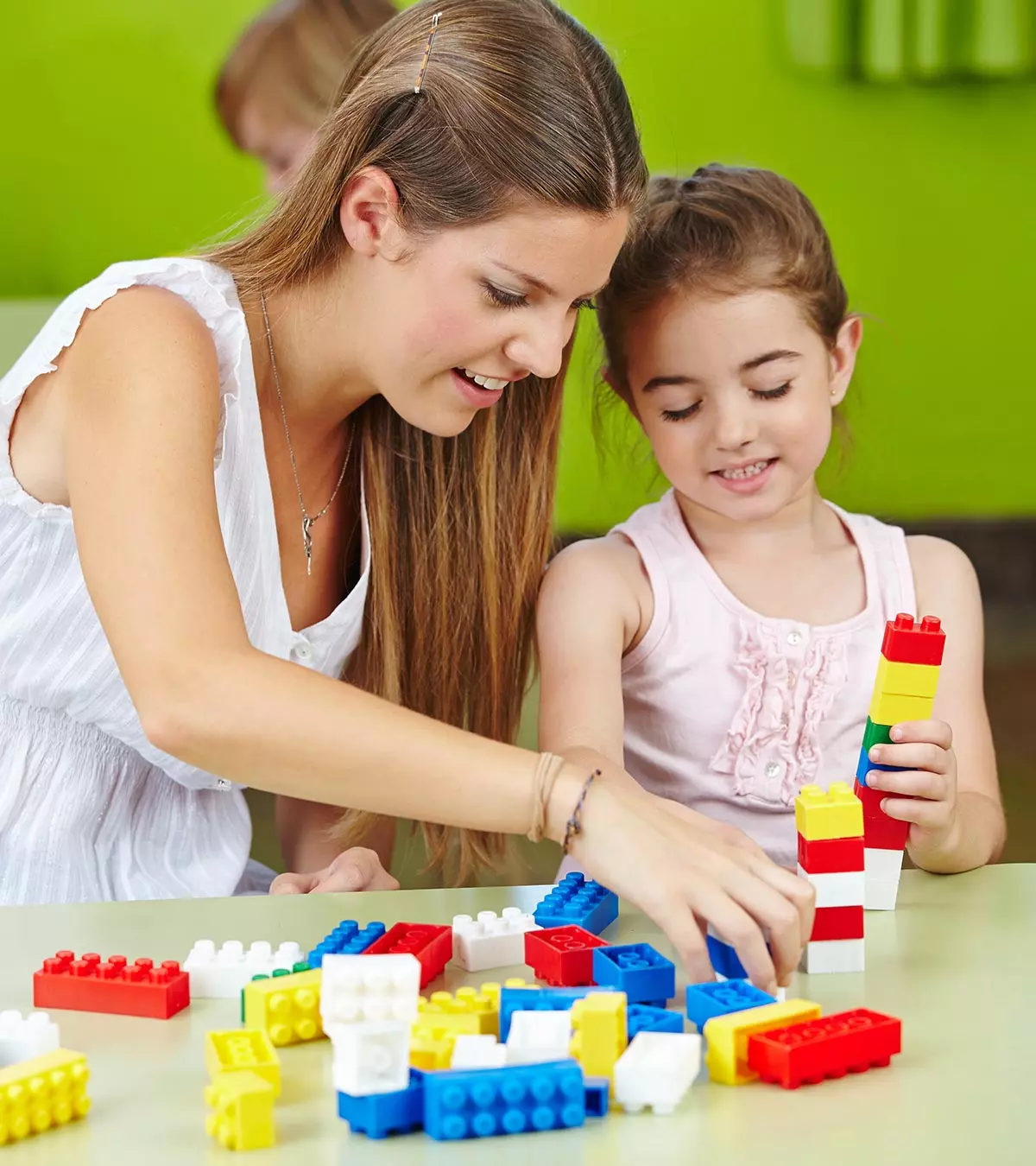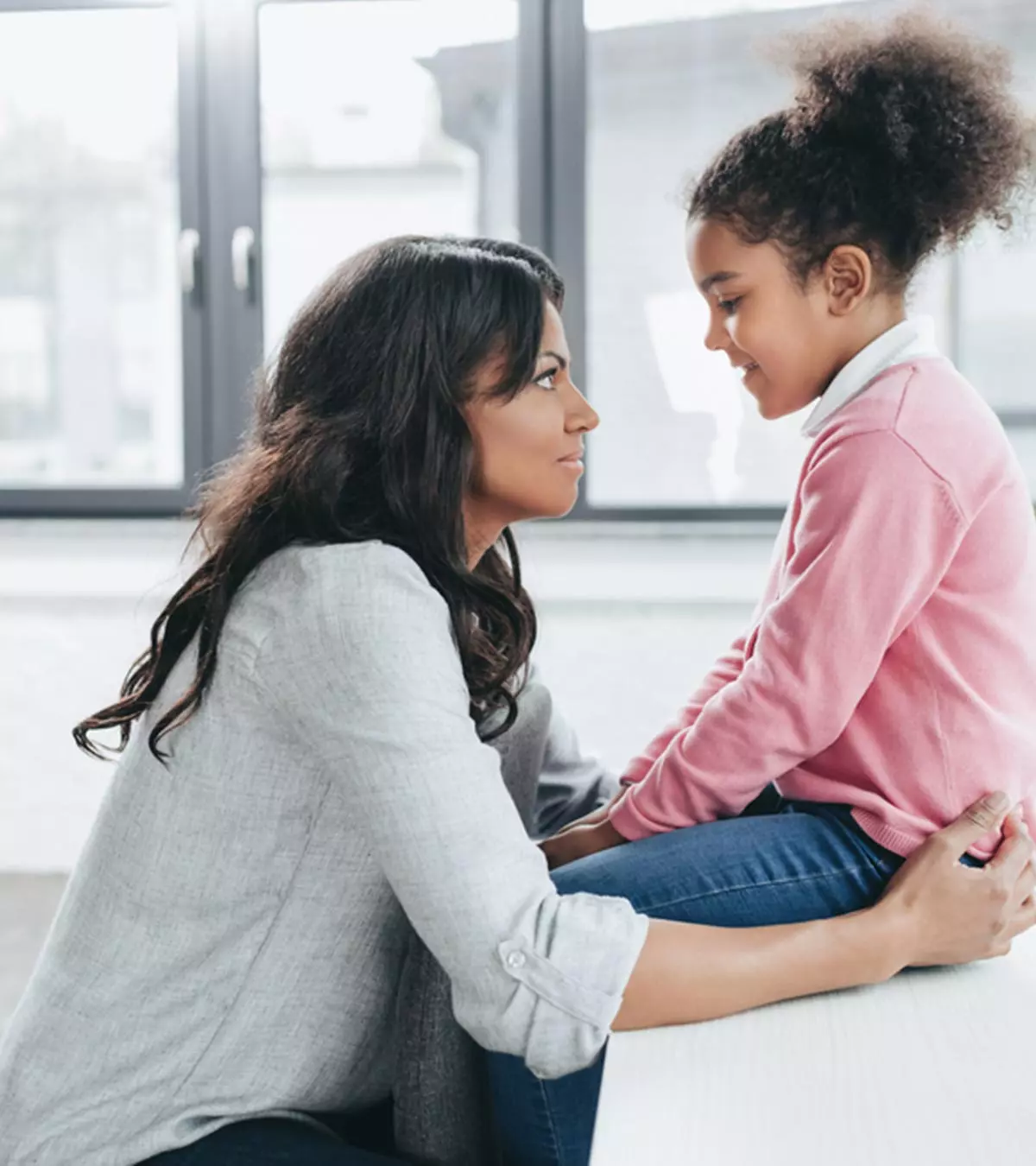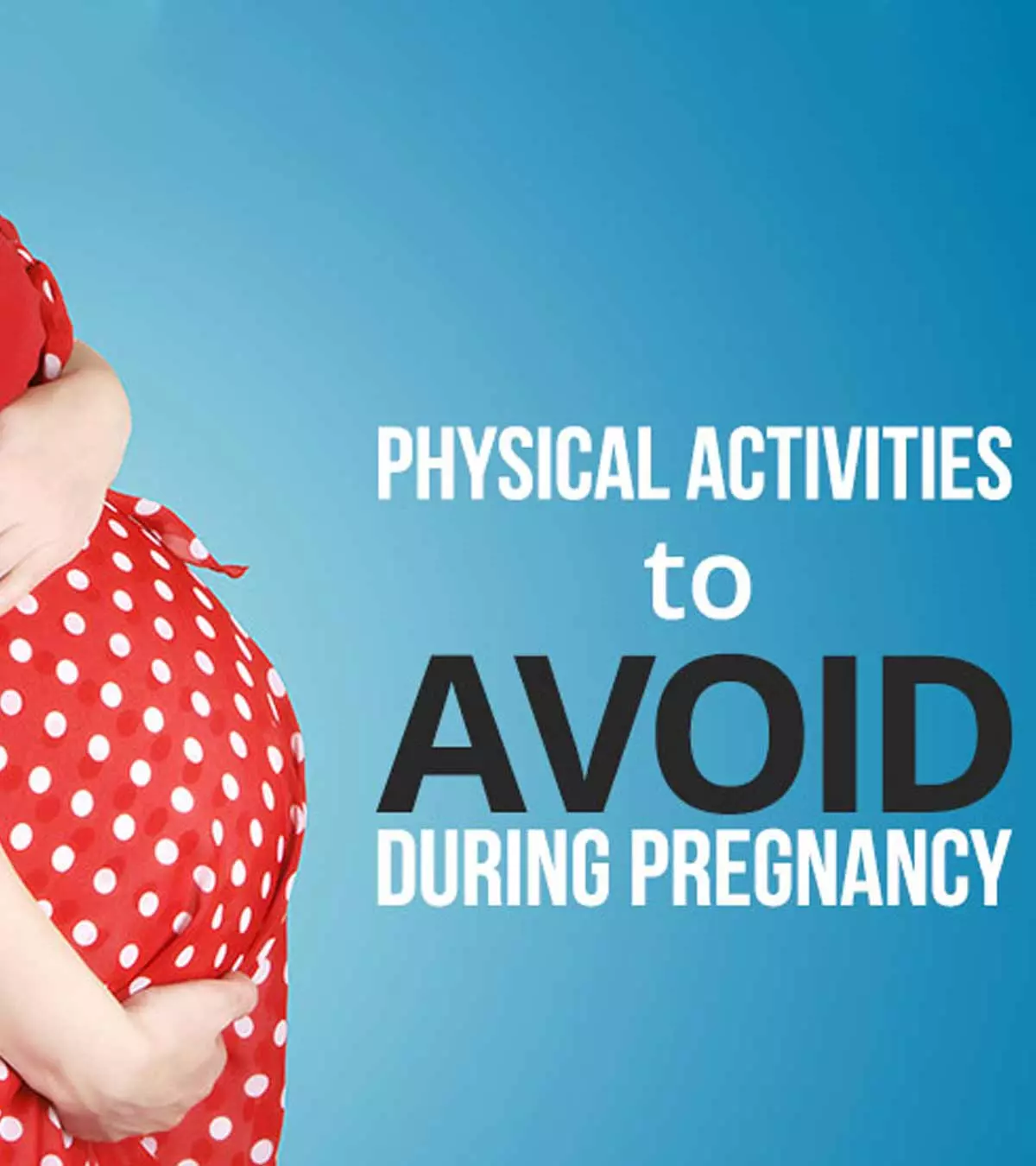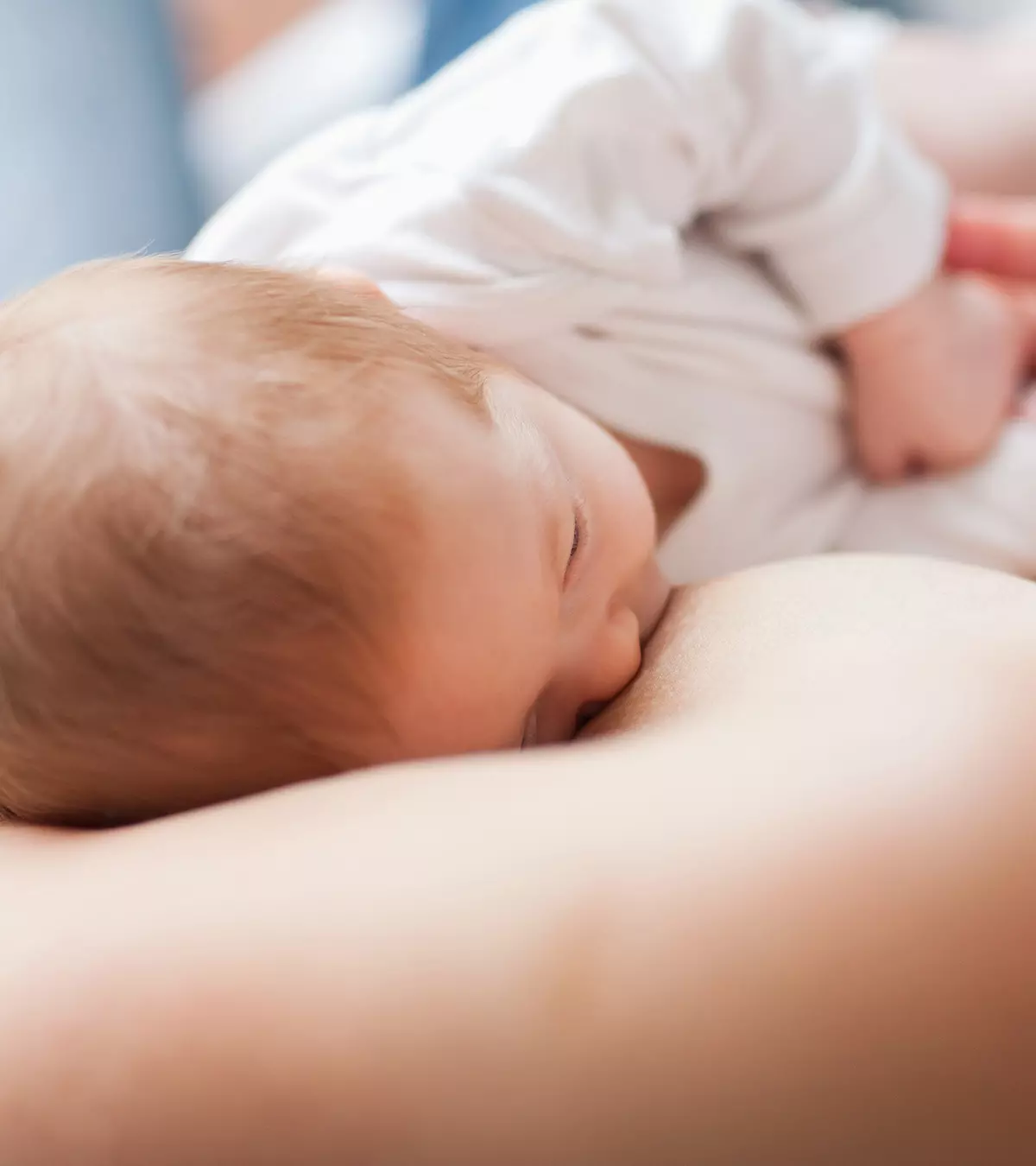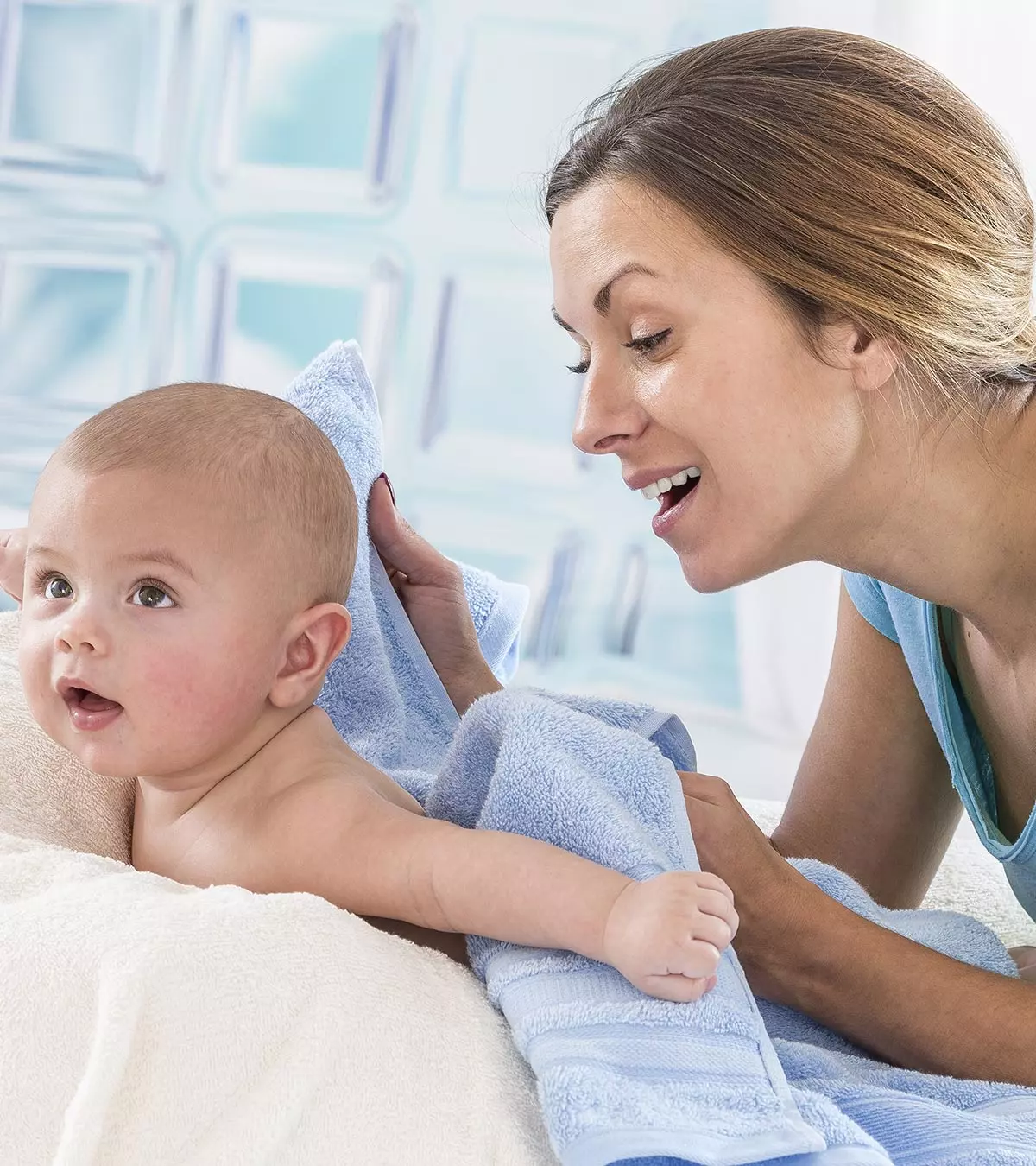

Image: Shutterstock
Knowing how to bathe a baby can help ease your fears during bath time. Thoughts like the baby slipping from your hand, water entering their nose, or excess pressure on the little body can make you hesitate to bathe your newborn. You may even panic imagining such occurrences, especially if you are a first-time mother. However, your baby does need a bath no matter how much handling the delicate little life worries you. We are here to answer your queries. Keep reading this post as we help you with a step-by-step guide on what to do before, during, and after bathing your baby and suggest precautionary measures you need to take in the bathroom.

Preparations That Go Into Bathing A Baby
Bathing a baby is a ritual that needs meticulous preparation. You need to keep several things ready before you bathe your baby. You would have to check in on the bath products, the temperature of the water, the baby’s feeding schedule, body temperature, and more.
1. Collect all the things:
Image: Shutterstock
Imagine you go to a store and then realize that you have forgotten your wallet. Painful, right? The feeling is the same when you sit down to bathe your baby and realize that you forgot the soap or his towel or something else. Also, your unnecessary movements (especially getting up and sitting down) may irritate your baby, and he may not want to take a bath.
- Therefore, line up all the necessary baby products around the bath tub, at an arm’s length.
- You would need soap, shampoo, towels, powder, moisturizing cream, comb or brush.
- Keep a diaper handy as you would need it immediately after the bath.
- You could use a few cotton swabs or balls to wipe the baby’s eyes and ears gently.
- If the baby is a few months old, you may put some toys in his tub to keep him engaged. However, this trick will not work with a newborn.
When using these products, make sure that they are suitable for a baby and are clinically tested.
2. Check your clothes and accessories:
Wear clothes which are comfortable and dry up quickly.
Your clothes should be comfortable for your baby too. They should be devoid of buttons, zippers or emanating objects.
Remove any jewelry on your hands and fingers, as they can scratch the gentle skin of the baby.
Also, trim your nails and make sure that the edges are not rough.
3. Set up the bathing tub:
Image: Shutterstock
When buying a bathtub, decide on what type of a tub you would want: the tub’s material, make, size, etc. Many newborn bath tubs have a sling attached to prevent the baby from slipping in the tub. Try and purchase a bathtub that is made of hard plastic material and is age appropriate.
- The bathtub should not be made of slippery material as the baby can slip and get injured while bathing. Spread a cloth at the base of the tub to prevent the baby from slipping.
- Do not use an adult bath tub as the baby’s needs to be smaller in size. The tub should not be so deep that you cannot hold your baby comfortably.
- There are different kinds of tubs available. Buy the one that has an option to hold your baby’s head and keep it afloat.
- Choose tubs which do not submerge the baby, even partially.
- You could use a kitchen sink too. However, cover the sink faucet with a think cloth or faucet covers. This would ensure that the baby’s head or any other part is not hurt while you bathe him.
Note that you need to add less water in the tub when the baby is young, and increase the level as he grows.
4. Check the water temperature:
Babies’ skin is more sensitive than adults’. This would mean that a temperature that is comfortably warm for you could be hot for them.
A temperature between 36ºC and 38ºC is the best for babies.
Do an elbow test to know how comfortable the water temperature is. As your elbow is a sensitive part, you could know the right temperature that will suit your baby. If your elbow feels warm, then add cold water.
You could use bath thermometers as well. They would give you the best idea of the temperature.
Now, you are ready with the bath items, tub, and water and sat down to bathe your baby. But how would you do that?
How To Bathe Your Baby?
Well, it is not all that tough, but it requires some concentration and a lot of patience. First things first, if you can get someone’s help, do so. In the initial weeks, make sure that someone is present by your side to help you bathe the baby. You will eventually manage to bathe the baby all by yourself.
1. Put your baby in the tub:
Image: Shutterstock
- Put the baby in the tub with his legs first. Hold his head, back, and neck with the other hand and then give him a bath.
- Only when you have lowered the baby well and held him properly, should you start pouring water.
- Use a small cup or cup your hands to pour water on him. Do not pour water over his eyes, mouth, or ears.
- If there is someone to assist you, ask them to cup their hands above the baby’s eyes and ears. This would ensure that the water or soap would not go into the baby’s eyes and ears.
2. Soap the baby:
Image: Shutterstock
- Buy mild, PH balanced soaps, without any perfumes.
- Start by soaping his arms, legs, and stomach. Once you have washed these areas, gently lift him up to wash his back. Do not turn the baby around. The soap that you use should be mild, clinically tested, and safe for babies.
- Do not wash the baby’s face. You could gently wipe it off with a damp cloth or with cotton swabs.
- When cleaning the genitals, use only a dab of soap. For a baby girl, wash from front to back to prevent infections, as the urethra in girls is closer to the urinary bladder and prone to infections.
- If your son has been circumcised, wipe the area gently with a wet cloth and dry it immediately. Do not let moisture or water stay in there for long.
- Do remember to clean behind the ears, between fingers, under the arms, and such places which accumulate sweat.
3. Wash baby’s hair:
Image: Shutterstock
- Baby’s head should be washed towards the end as most babies get uncomfortable and cold during hair wash. So wash the hair as the last step and take the baby out of the bath and begin the drying process.
- Rub some shampoo or soap , into your palms and gently massage it into the baby’s hair.
- Wash this off with a cup. Do cover your baby’s eyes and ears while you wash his hair.
Remember to check the temperature of the water again, if need be, to ensure that it is not too hot or cold.
A baby does not require regular hair washes. Doing it once a week should be fine as a baby’s scalp has natural oils, which maintain the hygiene.
4. Dry the baby:
Image: Shutterstock
Dry your baby immediately after the bath. Make sure that there are no water drops or moisture left on the baby’s body.
- Lift your baby from the tub carefully. Wrap him in a big bath towel but do not cover his face.
- Use cotton swabs or a soft cloth to wipe his face. Pat dry his body gently.
- Dry his hair by first dabbing out all the water with the towel and then gently massaging his hair. Remember, babies do not have very thick hair, so you should not dry the hair forcefully.
With this, you complete the mammoth task of bathing a baby. But it’s not over yet. What about the lost moisture or may be some unwanted moisture post bathing? Read on as we tell you what you have to do next.
What To Do After Bathing A Baby?
Use a hooded towel which is large enough to cover the baby. Instead of rubbing the towel on baby’s skin, gently pat the skin till it is dry.
The baby’s skin loses moisture during his bath. At the same time, there could be some water present in places which you couldn’t dry off.
A baby devoid of moisture means that his skin can dry quickly and crack. Moisture present in areas such as the genitals, underarms, or neck can cause infection. In both these situations, it is necessary to maintain the right moisture on the skin. You can achieve this through the use of a good moisturizer and powder.
We list out a few simple ways to maintain that perfect balance.
1. Use a moisturizer:
Image: Shutterstock
This is essential if your baby has dry skin. A moisturizer keeps the skin from peeling off. As the skin prevents the accumulation of bad flora, this would keep your baby away from infections.
[ Read : How To Use Himalaya Herbals Baby Powder? ]
2. Diaper and dress up the baby
Image: IStock
Once you massage the baby with moisturizer and apply the powder, diaper him. Tie the diaper properly so that it does not leak, and also keeps the baby dry and comfortable. Dress the baby in easy breathing clothes that would keep the baby warm and comfortable. Do not use clothes that increase the body temperature drastically.
There could be a time or two when your baby would not need a bath. Did you know that you need not have to bathe your baby daily?
How Often Should You Bathe Your Baby?
According to the American Academy of Pediatrics, babies do not need a bath every day. If you are cleaning the baby’s diaper area well and changing the diaper frequently, then your baby need not have a bath every day.
You can bathe him three times a week until he starts crawling around. As the newborns are sedentary, they do not need an everyday bath.
Should You Bathe The Baby In The Morning Or Night?
You can bathe him at any time that is not a rush hour for you. There would be more skin-to-skin contact during this time, so, give bathing a luxury of time.
Bathing time is a bonding time with the baby, but it is also the time when you need to handle the baby with utmost care. A slip could prove too costly for you. No, we’re not alarming you but alerting you to follow some safety measures.
5 Tips For Bathing Your Baby Safely
The safety measures will not only keep your baby safe but also give you some peace of mind.
1. Never leave your baby unattended:
You have someone at the door, or the phone just rang? No worries. Carry your baby along with you if you are going to attend to something else. Always keep an extra towel handy and use it if you have to get off mid-bath. Leaving your baby unsupervised is a big mistake. It takes split seconds for a baby to drown and have his lungs full of water. So be careful and cautious.
2. Do not leave the baby with water running in the tub:
When you are filling water in the tub, never leave your baby in it. Always put the baby into the tub only after you fill the tub and check the water temperature. Again, not to alarm you, but a baby could get third-degree burns at a temperature that may not be very hot for us (around 39°C upwards).
Also, if you leave the baby in the tub while filling it up, then he could slip out of your hands or drown.
3. Hold your baby upright when putting him into the tub:
When you are putting your baby into the tub, put him in feet first. Also, make sure to hold his head and neck with one hand at all times. Even when you lay the baby horizontally in the tub, hold his head completely above the water.
4. Always cover the baby’s eyes and ears:
You could find it difficult to wipe or drain the water that enters a baby’s eyes and ears. When washing your baby’s hair, always cup his ears and eyes. The baby could get ear infections if the water isn’t dried out from his ears. Clean his face with a damp cloth.
5. Sponge bath for an unwell baby:
When the baby is down with a cold or unwell due to some reason, go for a sponge bath. Also, sponge-bathe him until the umbilical cord falls off.
Yes, you need to take utmost care when the umbilical cord is still attached to your baby’s body.
How To Bathe A Baby With Umbilical Cord?
Babies can be given a sponge bath till the time the umbilical cord falls off and the area is healed, which can take up to 14 days post birth. Keep the umbilical stump area dry and if accidentally the area gets wet, gently pat it dry with a soft towel and expose it to air.
Here is a step-by-step guide on how to bathe a baby when his umbilical cord hasn’t fallen off yet. And, it takes about one to three weeks after birth for the cord to fall off.
- Fold a diaper and place it under the umbilical cord.
- Use wet cotton swabs to clean the area around the cord. Dry the area with dry cotton swabs. You can apply a little force (but don’t be crude). As there are no nerve endings around that area, it doesn’t hurt.
- In about the second week, you could notice a few drops of blood. Do not panic as this is because of the drying up of the cord. Just clean this with wet and dry cotton swabs.
You should let the cord dry and fall by itself and never pull it off. As a precaution, keep the area around the cord dry at all times, even after you have cleaned it. There should be no moisture remnant.
Your baby may get fussy as you try to clean the area but coo or swing him to calm him down. One thing that you would have to look out for is any redness (not the drops of blood) and infection. If there are any of these, take the baby to a doctor immediately.
Frequently Asked Questions
1. Do I need to clean my newborn belly button while bathing?
Clean the baby’s umbilical cord with sponge and water until it falls off 5 to 15 days after birth. Once the stump has fallen off, continue giving a sponge bath to your baby until their belly button area dries up. Later, you can gently clean the belly button while bathing as you do with other body parts (1).
2. Is it sanitary to bathe the baby in the kitchen sink?
No. While using a kitchen sink is safe and perfect for bathing your baby, clean the sink properly, scrub it, and sanitize it before putting the baby in the sink.
3. Can I bathe my baby in the shower with me?
Yes. You can shower with your baby, but make sure the water is appropriate for your baby (warm water) and keep your baby’s face away from the pouring water (2).
Most new parents often wonder how to bathe a baby. The task may seem stressful as the baby gets fussy during your attempts to clean them up. To make things easier and enjoy this bonding time, ensure you have all necessary items within an arm’s reach. Steer clear of jewelry or cloth accessories that may scratch the baby. Perform an elbow test or use a thermometer to check the temperature. Prevent water from getting into their eyes or ears, wash the head at the end, and pat dry their skin.
References
- Umbilical cord care in newborns.
https://www.mountsinai.org/health-library/special-topic/umbilical-cord-care-in-newborns - Bathing a newborn.
https://raisingchildren.net.au/newborns/health-daily-care/hygiene-keeping-clean/bathing-a-newborn
Community Experiences
Join the conversation and become a part of our nurturing community! Share your stories, experiences, and insights to connect with fellow parents.
Read full bio of Pranjul Tandon
Read full bio of Rohit Garoo


